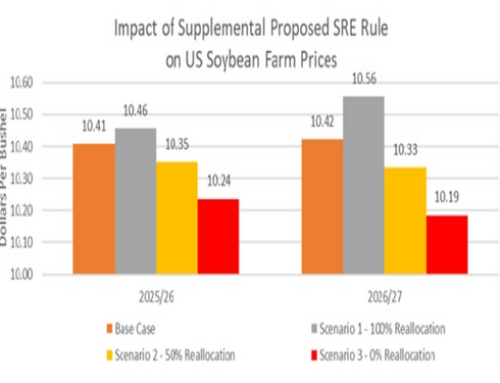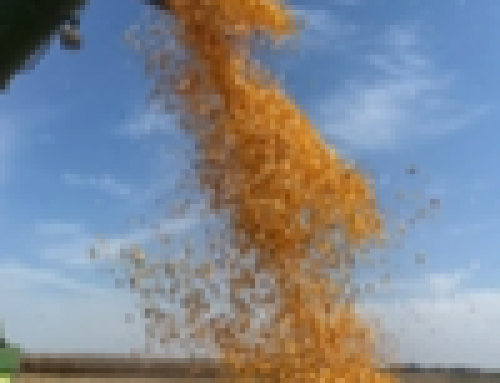Source: Global Market Insights news release
Sylbville, DE — In recent years, sustainable agricultural practices have gained significant momentum as global awareness of environmental concerns grows. One such innovation that has risen to prominence is the use of biopesticides. This eco-friendly alternative to traditional chemical pesticides is experiencing tremendous growth, with projections indicating that the biopesticides market will exceed $7.61 billion by 2032.
The rising adoption of biopesticides aligns with the increasing demand for organic produce, stringent environmental regulations, and the desire to reduce chemical residues in food. In this article, we will explore the growth drivers, key trends, and challenges shaping the future of the biopesticides market.
What Are Biopesticides?
Biopesticides are naturally derived pesticides, typically from biological sources such as plants, bacteria, fungi, and minerals. They play a crucial role in pest management by controlling harmful insects, weeds, and diseases in crops without the harmful side effects associated with synthetic chemicals. Unlike traditional pesticides, biopesticides are highly specific to their target pests, reducing the impact on non-target organisms such as beneficial insects and pollinators like bees.
Some common types of biopesticides include:
•Microbial biopesticides: These are derived from microorganisms such as bacteria, fungi, or viruses that specifically target pests.
•Biochemical biopesticides: These are natural substances like plant extracts or pheromones that disrupt pest behavior.
•Plant-incorporated protectants (PIPs): These are genetically engineered plants that produce their own pest-resistant compounds.
Why Is the Biopesticides Market Growing?
1.Shift Toward Sustainable Agriculture: With the world’s population projected to reach 9.7 billion by 2050, there is immense pressure on the agriculture sector to meet growing food demands without further depleting natural resources. Conventional farming, heavily reliant on chemical pesticides, has contributed to soil degradation, water contamination, and biodiversity loss. As a result, there is a strong push towards sustainable agricultural practices, with biopesticides emerging as a pivotal solution.
2.Increased Demand for Organic Produce: Consumers are becoming more health-conscious, leading to a surge in the demand for organic and pesticide-free food products. Organic farming prohibits the use of synthetic chemicals, which has significantly increased the adoption of biopesticides in organic agriculture. According to a study by the Organic Trade Association, organic food sales in the U.S. have steadily increased, creating a favorable environment for biopesticide manufacturers.
3.Government Regulations and Support: Regulatory bodies across the globe are tightening restrictions on chemical pesticide use due to their adverse effects on the environment and human health. The European Union’s Sustainable Use Directive and the U.S. Environmental Protection Agency’s (EPA) biopesticide registration process have encouraged farmers to transition to eco-friendly alternatives. Additionally, governments are offering subsidies and incentives to promote biopesticide use, further boosting market growth.
4.Growing Resistance to Chemical Pesticides: Over time, pests have developed resistance to many conventional chemical pesticides, rendering them less effective. This has prompted farmers to seek alternative pest control methods, with biopesticides offering a viable solution. The specificity of biopesticides to target pests reduces the likelihood of resistance development, making them an attractive option for long-term pest management.
Key Trends in the Biopesticides Market
1.Technological Advancements: Innovations in biotechnology and genetic engineering are leading to the development of more effective and efficient biopesticides. For example, microbial biopesticides that utilize beneficial bacteria and fungi are being refined to enhance their efficacy against a broader range of pests. These advancements are expected to drive the widespread adoption of biopesticides in both conventional and organic farming.
2.Rise of Integrated Pest Management (IPM): Integrated Pest Management (IPM) is a holistic approach to pest control that combines various techniques, including biological control, habitat manipulation, and the use of resistant crop varieties. Biopesticides play a key role in IPM strategies, as they can be used alongside other control methods to minimize chemical pesticide use. As IPM gains popularity, the demand for biopesticides is likely to increase.
3.Global Expansion: While biopesticides have seen significant adoption in developed regions like North America and Europe, emerging markets in Asia-Pacific, Latin America, and Africa are expected to witness rapid growth in the coming years. As these regions experience rising food demand and increased awareness of environmental issues, the adoption of biopesticides is set to grow, presenting lucrative opportunities for market expansion.
Challenges in the Biopesticides Market
1.High Development Costs: Developing and registering a new biopesticide can be an expensive and time-consuming process. Regulatory approval involves rigorous testing to ensure the safety and efficacy of the product, which can increase costs for manufacturers. This may limit the entry of new players into the market and slow down product innovation.
2.Limited Shelf Life and Storage Challenges: Biopesticides, particularly microbial-based products, often have a shorter shelf life compared to chemical pesticides. They are also sensitive to environmental conditions such as temperature and humidity, which can affect their efficacy. Developing biopesticides with longer shelf lives and improved storage stability is a key challenge for the industry.
3.Awareness and Education: Despite the growing popularity of biopesticides, there is still a lack of awareness among farmers, particularly in developing regions. Many farmers are unfamiliar with the benefits of biopesticides and may be reluctant to switch from traditional chemical pesticides. Educating farmers about the advantages of biopesticides and providing training on their proper use will be crucial to driving market growth.
Future Outlook
The global biopesticides market is poised for significant growth, with projections estimating the market value to exceed $7.61 billion by 2032. The growing emphasis on sustainable agriculture, coupled with technological advancements and favorable government policies, will drive the widespread adoption of biopesticides in the coming years. As consumers continue to demand safer and more environmentally friendly food products, the agricultural industry will increasingly turn to biopesticides as a viable solution.
In conclusion, biopesticides represent the future of pest management in agriculture. They offer a sustainable, eco-friendly alternative to chemical pesticides, with the potential to improve crop yields while minimizing environmental impact. As the biopesticides market continues to grow, it will play a vital role in shaping the future of farming, ensuring food security for generations to come.
For more information click here.



